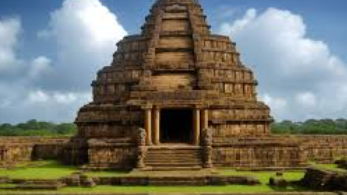

Bhubaneswar: The year was around 1250 CE, during the reign of King Narasimhadeva I of the Eastern Ganga Dynasty. An ambitious project was underway - to create a temple that would not just honor the Sun God Surya, but would stand as a testament to human ingenuity and divine reverence. The king commissioned the most brilliant architects and craftsmen of the time, demanding nothing short of perfection.
Among the master builders was a young architect, barely in his twenties, whose name has been lost to the brutal winds of time. A prodigy whose mathematical precision and artistic vision were unparalleled, he was entrusted with solving the temple's most complex architectural challenge - creating a massive stone chariot that would seem to emerge from the earth, with wheels that could metaphorically roll through time itself.
The project was perilous. Thousands of workers toiled under scorching sun and demanding conditions, with the young architect driving them with a combination of visionary passion and ruthless determination. Days turned into months, months into years. The temple began to take shape, a magnificent representation of cosmic movement and divine energy.
But perfection demanded a price. As the construction neared completion, the architect realized that a critical structural element was missing - a central support that would ensure the temple's stability for centuries.
In a moment that would echo through folklore for generations, the young architect made a decision that would seal his fate and invoke a mother's devastating curse. He would embed himself - literally and metaphorically - into the temple's foundation.
Local legends speak of a secret ritual where the young man was willingly entombed within the temple's core, his body becoming the sacrificial cornerstone that would hold the massive structure together. Some versions of the story suggest he was buried alive, others that he was killed through more elaborate means.
His elderly mother, witnessing her son's sacrifice, unleashed a curse that would chill the bones of generations to come. "If this temple cannot stand without my son's blood," she reportedly screamed, her voice cutting through the construction site like a knife, "then it shall not stand at all!"
What followed was a series of mysterious events that seemed to validate the mother's supernatural proclamation. Despite being a marvel of 13th-century engineering, the Konark Sun Temple began to deteriorate rapidly. The massive magnetic loadstone that was said to have been installed at the temple's peak mysteriously disappeared. The intricate sculptures started crumbling, and the structure began losing its structural integrity.
Portuguese and other maritime records from subsequent centuries describe the temple's gradual decline. The once-gleaming "Black Pagoda" - as sailors called it - became a shadow of its former self. Natural calamities, invasions, and environmental changes accelerated its destruction, almost as if respecting the heartbroken mother's vengeful prophecy.
Today, the Konark Sun Temple stands as a UNESCO World Heritage Site, its ruins telling a story far more complex than mere architectural achievement. Each fallen stone, each weathered sculpture seems to whisper the tale of the young architect and his mother's curse.
Modern archaeologists and historians continue to debate the historical accuracy of these legends. Yet, the story persists, a testament to the human need to find meaning in tragedy, to understand sacrifice beyond mere physical destruction.
The temple remains a powerful metaphor - of human ambition, of the thin line between genius and madness, and of a mother's love that transcends even death.
In the end, the Konark Sun Temple is more than stone. It is a living poem, written in the language of sacrifice, resilience, and the eternal dance between creation and destruction.